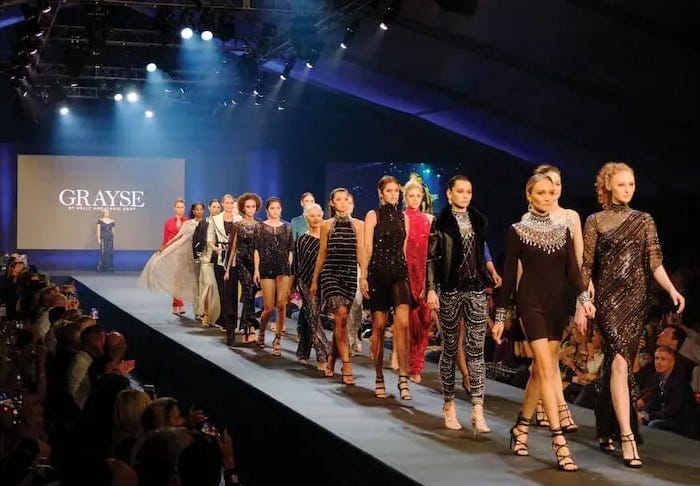– 24 May 2025 –
Janus:
In last week’s article, it would have been useful to describe the role of attraction in the personal choices that people make. In speaking of choices, people assume that this equates to some kind of rational, informed decision. But every marketer knows that for every good reason a person comes up with for his or her decision, there is a real reason beneath the surface. And often those real reasons are emotional, personal, and irrational.
Decisions Rational, and Decisions Personal
For decisions where we have little personal interest or stake one way or another, we more likely make decisions based on simple, dispassionate reason. When the outcome isn’t personal, we more likely choose what seems to be the better, most rational option. “I just want windshield wipers that will work, and not the cheapest ones but not the most expensive.” It’s hard to get excited about windshield wipers, so long as they function, though I’m sure some people get off on them.
But when people buy clothes or cars or houses, it would seem funny to make decisions based purely on utility or practicality, without a thought to personal taste: “I want to buy the cheapest possible two-bedroom house that requires little to no repair, located within twenty minutes of work in a relatively low-crime area; and its looks and layout don’t matter.”
Most people consider house-buying as “home-buying.” Their relationship to the house is personal. They want a personal connection to the house, as irrational as that may be in the purest sense. They see the house as an extension of themselves, consciously or unconsciously. It becomes part of their personal identity.
In cases like this, where people make personal decisions that relate to their private existence (choosing clothes, cars, houses, spouses, belief-systems, etc.), less rational factors play in: namely it boils down personal attraction. We’re personally drawn to people, places, things, and ideas. Likewise, we’re personally repelled by other people, places, things, ideas. Why?
Personal attraction isn’t especially rational. We can’t control it directly. Much of personal attraction is rooted in our personalities and how our personalities relate with the surrounding culture.
Personalities as Products of Nature and Nurture
What makes up our personalities?
This comes down to the nature or nurture question.
There are genetic components, such as aptitudes, temperament, health, and some innate taste preferences that relate to “nature.” Some babies like the taste of green beans; some hate green beans innately. Some people are drawn to athletics and action from infancy; others prefer more thoughtful or artistic pursuits almost from birth. Some of these innate aspects of our personalities are common to all humanity, and some common to our gender, and our nations/ethnicities genetically.
Some of these inherited traits we can modify with a greater or lesser amount of effort (probably greater), and some traits naturally change with age over the course of our lives, but some—maybe most traits—are so hard-wired that we can never change them, only deal with them.
There are also environmental components of our personalities which come down to “nurture.” Our upbringing and individual life experience play their parts, but the surrounding culture plays a major role in both upbringing and experience, directly and indirectly.
We are social creatures. People grow up interacting and cooperating with one another, at the family level, the local level, and the national level. These interactions are comparable to honeybees spreading pollen from flower to flower in a garden, and from garden to garden. The cross-pollination of our interactions—within families, locales, nations, etc.—spreads a common culture to all its parts. The more we share in common with other groups, and the more proximity, the more cross-pollination occurs, and this forms what we call culture.
Personalities in Relation to Culture
Culture isn’t merely the sum total of foods and holidays and consumer choices. Culture forms over time from the shared duties, attitudes, understandings, communications, history, and environment in which a people cross-pollinates. Shared life.
Culture gives us a common range of expressions in our behaviors, attitudes, understandings, etc.—everyday things that people take for granted. This culture shapes our personalities directly, but also, culture indirectly shapes our upbringing and our life experiences through others, such as our parents and our peers. Over time, culture even shapes our genetics to some extent, as the culture represents a common, selective breeding pool: people tend to breed within their culture.
Culture Shapes Personal Attraction
Out of this mixture of personality and culture rises personal attraction. We are drawn to that which appeals to us individually through these instinctive forces.
In the moment, we can’t really control or help what makes us attracted to something or another; we can only control how we respond to that attraction (or repulsion, for that matter.)
Some things that attract us aren’t good for us. Some poor truck drivers, for instance, might find the local lot lizard attractive.
Sometimes we are repulsed by things that are good for us. Those same truck drivers might well recoil in dread at having to go to the doctor to get a Rocephin shot.
Even though, in the moment, we live at the mercy of whatever attracts us or repulses us, and we can’t directly control these forces (even though we can control our behavior!) there are ways to engineer our inclinations towards attraction and repulsion over time, indirectly.
Engineering Attraction
What we put into our minds and our bodies over time, and what we actively do, affects our innate habits and inclinations over time. With self-discipline, we can begin to change some of our tastes—what attracts us and what repels us—over time.
Often, this is difficult, and it comes down to delaying gratification, or making do with less. Sometimes these changes are forced on us through circumstances. We get burned, literally or figuratively, and we learn! But we often find that our very tastes have changed over time, sometimes even dramatically. We are no longer drawn (or less drawn, at least) to what seemed so good or important before. We no longer find other things so awful or contemptible.
Naturally there are limits on this. Some changes take moderate effort, some considerable and constant vigilance, and others we can never change at all. But that is personal and deliberate effort.
There are also more scientific ways to affect our tastes and inclinations. We call this social engineering. It is the manipulation of our culture (personal or a larger culture) to change our personalities over time, and thus change what creates attraction and revulsion, and thereby change our behavior.
This can be done primitively through direct stimulation and manipulation of our senses (pain/pleasure associations, for example.) This involves some kind of direct force, usually in an institutional environment, taking the form of drugs, sensory control, diet, etc. And its effectiveness is limited.
But personalities can also be engineered, in a broader sense, through more subtle manipulations of our culture, where we are made to associate certain things with goodness, pleasure, high-status, etc, and other things with evil, pain, and low-status.
In fact, the dichotomies of good/evil, approval/disapproval, high-status/low-status is necessary to bring about personality change. People respond best to polarized choices. In shopping, they choose Costco not only because they are attracted to its sales or selections, but because they despise Sam’s Club and the indefinite, but certainly inferior, Sam’s Club shopper. Costco maintains the higher status for its target market. In politics, people don’t vote so much for whichever political candidate: they vote more passionately against the evil candidate from the other party. Polarization is an important ingredient of social engineering.
While people aren’t directly controlled, they respond to cultural changes, and culture responds to fashion.
Fashion Shapes Culture
In an organic society, culture changes over time through societal interactions, available materials, common environment, events, etc.
In more advanced societies, cultures change increasingly through fashions, which themselves have varying levels of organic stimulus. (I should mention that by fashion, I’m not merely talking about fashions of physical appearance. I’m talking about fashions in attitude, thought, expression, ideas, even faith.)
But unlike the societies of the past, today’s artificial, engineered societies design and control the tastes of society, and deliberately minimize or co-opt the roles of the organic and natural. All the advantages of coercive institutions are in play in modern societies, but none of the disadvantages. People believe that they are free to make their own choices, control their own environments, pursue their own happiness, etc. But they are heavily manipulated. Everything and everyone moves in one direction.
Rather than direct coercion, today’s societies manipulate the tastes and interests of their people through fashion, manipulate their bodies through pollution and the medical/pharmaceutical industry, and manipulate their senses through media that they absorb through electronic devices.
And fashion steers the culture towards the acceptance and celebration of these things, directing what tastes, actions, attitudes people favor in relation to conditions and events, and promoting what forms any opposition might take (to make sure that opposition is always shunted into harmless wastes of time.)
And it works. At best, we are livestock living in hidden fences. At worst, we are animals in a zoo, given some broad natural-looking facsimile of a free environment, but blocked off with glass. Domesticated to be used and discarded for the sake of others. Whether it’s a fenced-in pasture or a walled-in zoo, the result is the same: we are institutionalized within a machine.
More and more people dedicate their lives to artificial fashions in culture. From consumer choices, ideologies, to friendships and sexual relationships, people follow unnatural impulses of attraction and revulsion, impulses that stem from socially-engineered cultural experience within synthetic environments.
Glamor Beasts
People prefer to read quips on social media, and they can’t focus on books. People prefer restaurants, and they can only heat up ready-made meals rather than truly cook. People prefer texting over speech, and they dismally fail in face-to-face communication. They attain dumbed-down college degrees and massive debt, and they don’t even know how to do their jobs outside a template, and barely at that. They prefer anonymous sex on Tinder, and they can’t even function in a marriage, or as parents, if they haven’t sterilized themselves.
Most farm animals would die in the wild without human care. Zoo animals raised in captivity have to be taught to hunt, socialize, and even groom themselves if they are to survive in the wild. Most of today’s people wouldn’t know how to function in societies from even a hundred years ago.
We are so heavily manipulated through our tastes that we almost cease to be rational human beings. We think we are free and special, freely picking our pre-packaged choices. But we are pent-up, domesticated animals.











